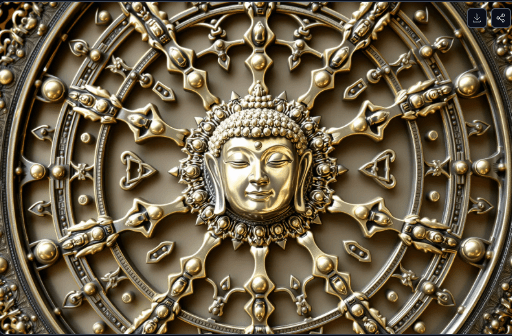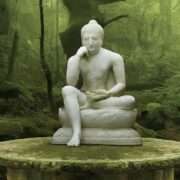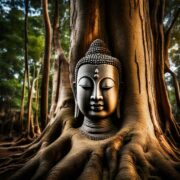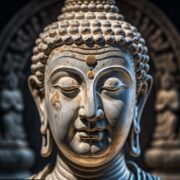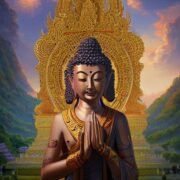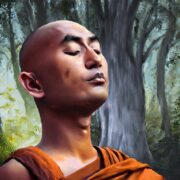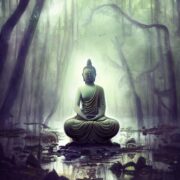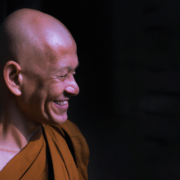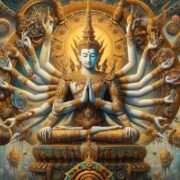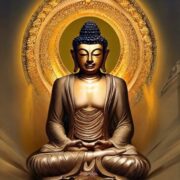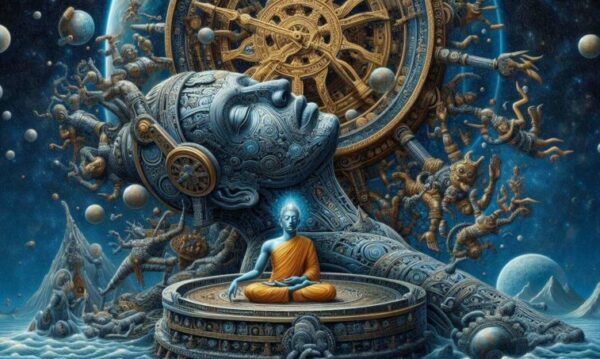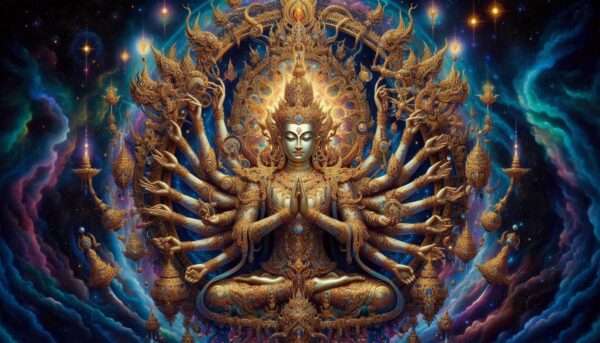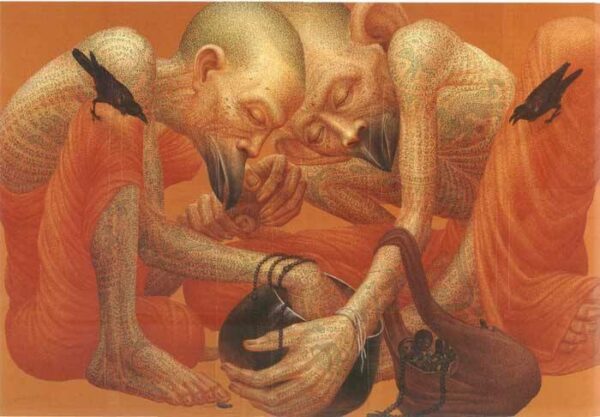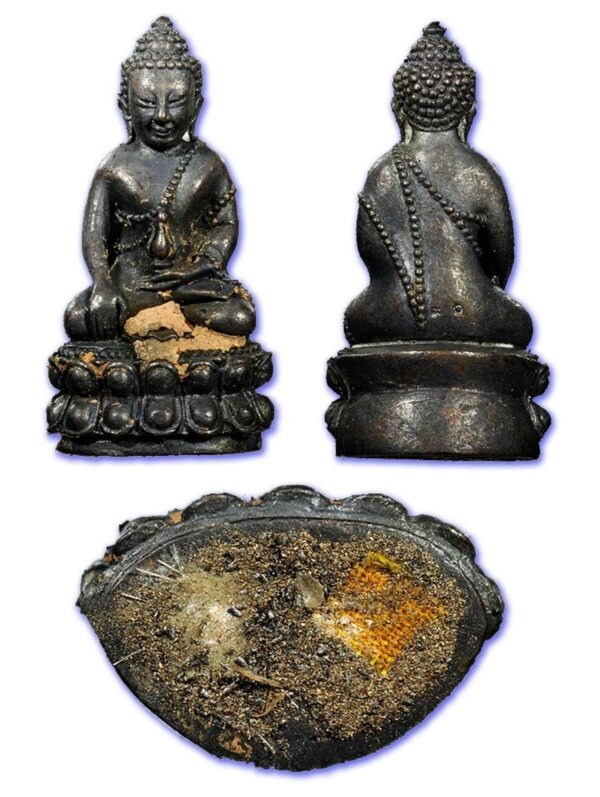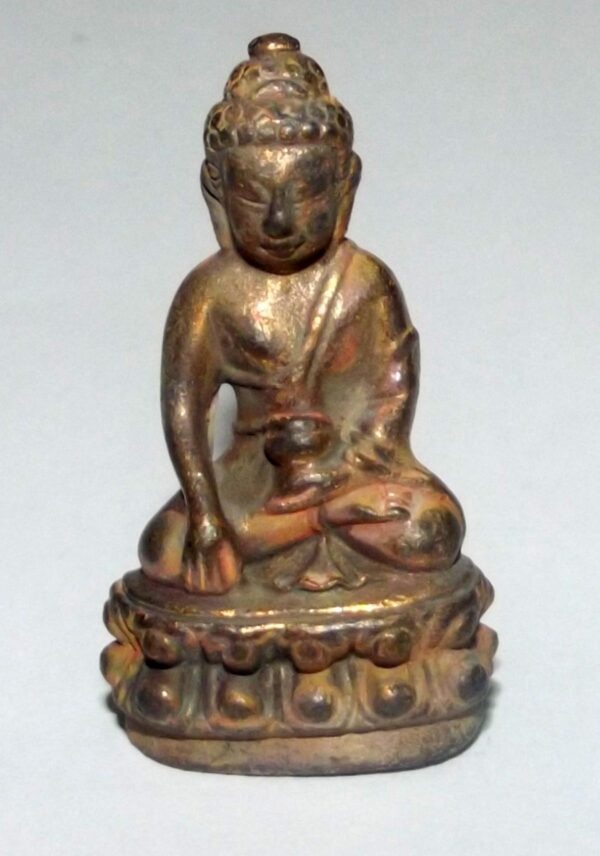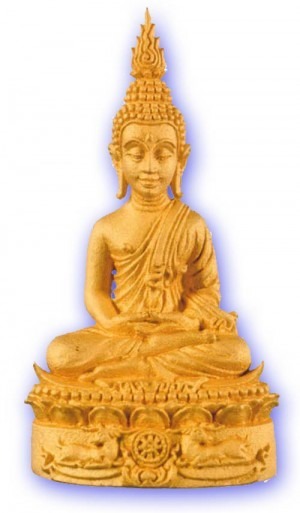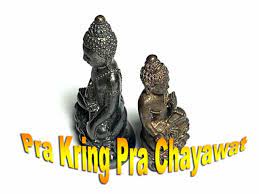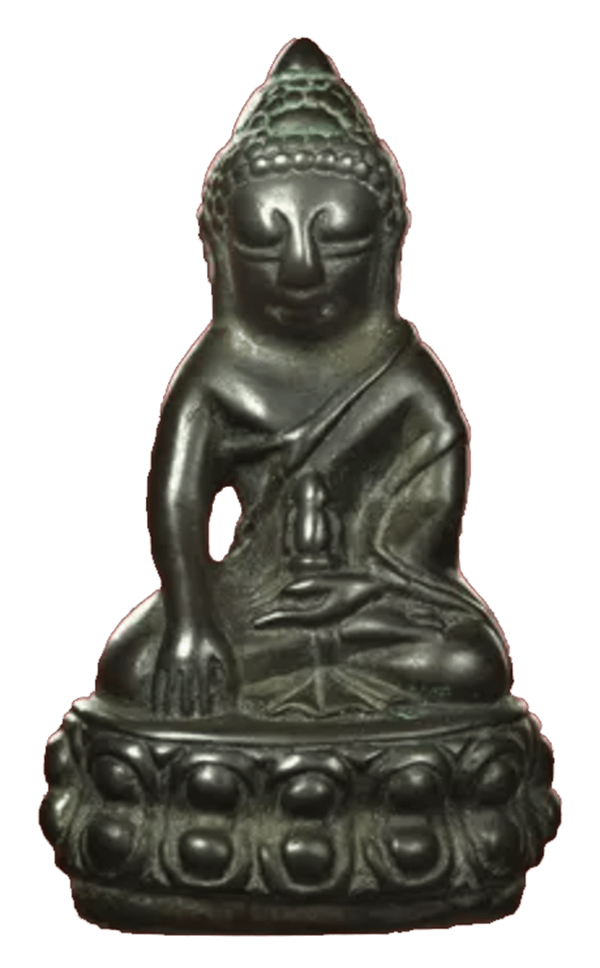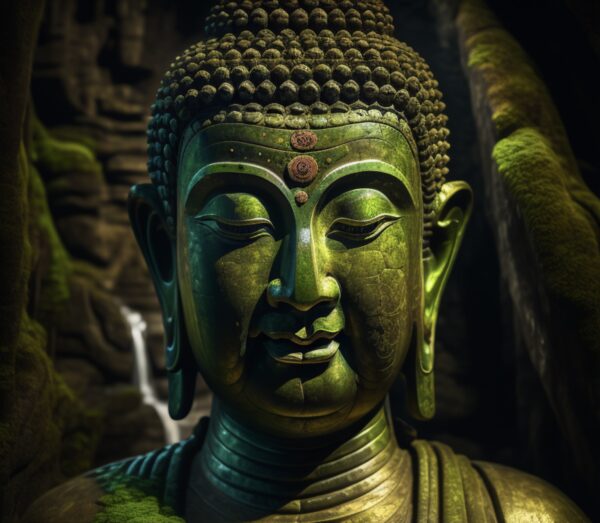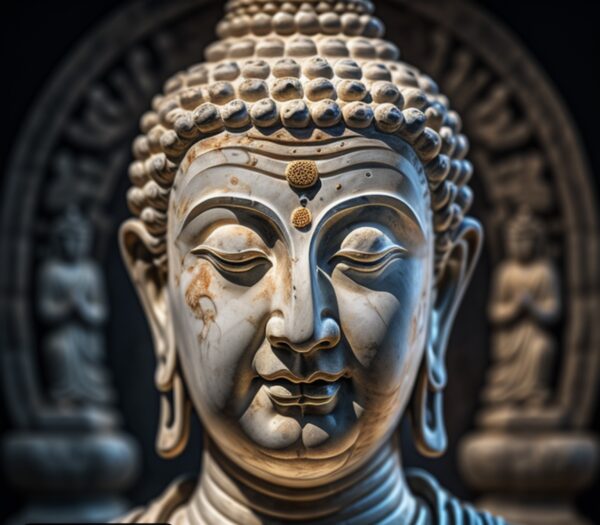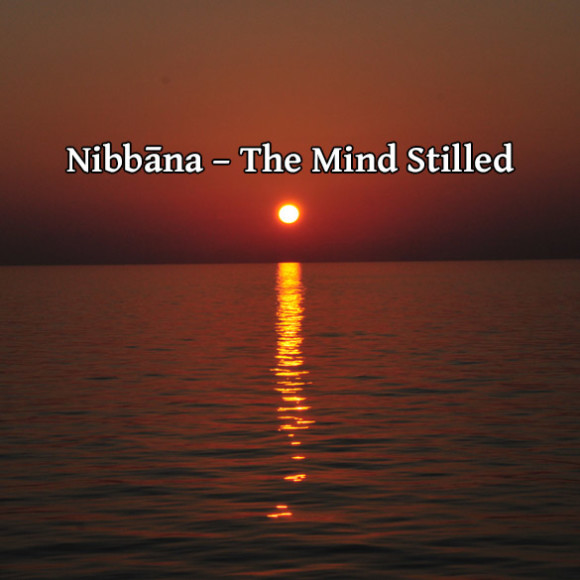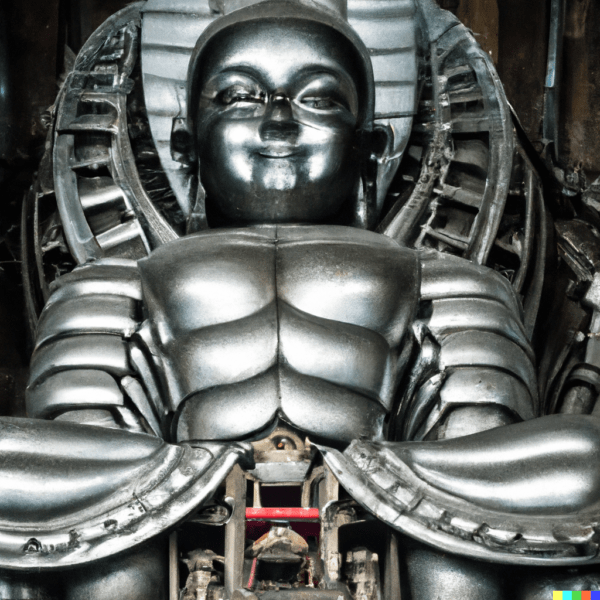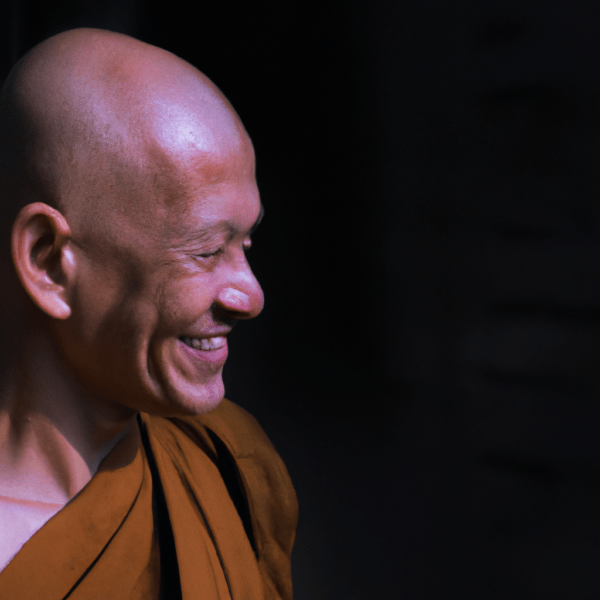Vipassanā Kammathāna:
The Path to Profound Insight in the Thai Forest Tradition
As an academic examination of this profound contemplative practice, I shall elucidate the quintessential elements of Vipassanā Kammathāna within the context of the Thai Forest Tradition, a lineage renowned for its rigorous adherence to the original teachings of the Buddha.
The Essence of Vipassanā Kammathāna
Vipassanā Kammathāna represents an extraordinary methodological approach to meditation that transcends mere tranquility practices. The term itself merits etymological analysis: “Vipassanā” derives from the Pāli roots “vi” (special, clear) and “passanā” (seeing), thus denoting “clear seeing” or “insight.” “Kammathāna” literally translates as “working ground” or “place of practice.” Together, they constitute a comprehensive framework for cultivating penetrative insight into the fundamental nature of phenomenological reality.
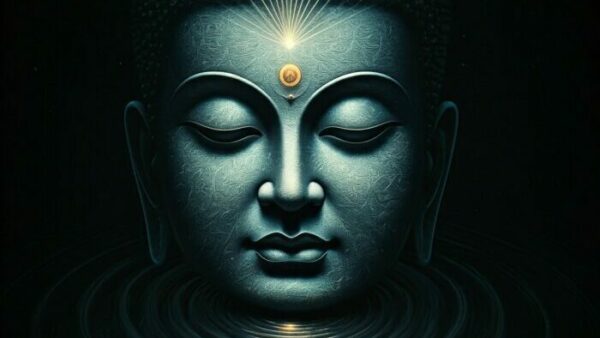
This practice is inextricably intertwined with the Thai Forest Tradition (Kammaṭṭhāna Forest Tradition), a revivalist movement within Theravāda Buddhism that emerged in the late 19th and early 20th centuries. The tradition’s progenitors—most notably Ajahn Mun Bhuridatta and Ajahn Sao Kantasīlo—sought to reestablish the authentic practice of the Buddha’s teachings by returning to the forest, emulating the Buddha’s own journey toward enlightenment.
The Sylvan Environment as Pedagogical Instrument

The deliberate selection of forest environments for practice represents more than mere aesthetic preference; it constitutes a sophisticated pedagogical strategy. The forest, with its inherent unpredictability, transience, and natural cycles, serves as a living laboratory for observing the three characteristics of existence (Tilakkhaṇa).
The practitioner, immersed in this natural setting, encounters direct experiential evidence of impermanence (anicca), unsatisfactoriness (dukkha), and non-self (anattā) through quotidian observations: the decay of vegetation, the ceaseless transformation of the environment, and the interdependence of ecological systems.
Theoretical Framework: The Three Marks of Existence
The ontological foundation of Vipassanā Kammathāna rests upon the three characteristics of existence (Tilakkhaṇa), which constitute the fundamental axioms of Buddhist phenomenology:
1. Impermanence (Anicca)
Anicca represents the inexorable flux characterizing all conditioned phenomena. This principle transcends superficial change, penetrating to the subatomic level where particles arise and cease in microseconds. The Buddha’s exposition on impermanence was revolutionary in its assertion that change is not merely an attribute of existence but its very essence. Contemporary quantum physics offers striking parallels to this ancient understanding through observations of subatomic particle behavior.

The recognition of impermanence serves as an epistemological tool, dismantling the cognitive distortion that stability can be found in conditioned phenomena. Forest practitioners confront this reality directly through the observation of natural processes—witnessing the transformation of living organisms, weather patterns, and even their own bodily sensations and mental states.
2. Unsatisfactoriness (Dukkha)
Dukkha encompasses a spectrum of experiential dissatisfaction far more nuanced than mere suffering. The Buddha delineated three distinct manifestations:
- Dukkha-dukkha: Explicit suffering encompassing physical pain, illness, and psychological distress.
- Viparinama-dukkha: The inherent unsatisfactoriness arising from change, particularly when pleasant experiences inevitably cease.
- Sankhāra-dukkha: The subtle, pervasive unsatisfactoriness inherent in all conditioned phenomena due to their impermanent and insubstantial nature.
The forest environment accentuates these dimensions of dukkha through direct confrontation with physical discomfort, environmental challenges, and the perpetual transformation of one’s surroundings.
3. Non-self (Anattā)
Anattā constitutes perhaps the most profound and counterintuitive principle in Buddhist philosophy. It posits that within the five aggregates (pañcakkhandhā)—form (rūpa), feeling (vedanā), perception (saññā), mental formations (saṅkhāra), and consciousness (viññāṇa)—no permanent, autonomous self can be identified.

This principle directly challenges the pervasive cognitive tendency toward self-identification. Through sustained contemplation, practitioners recognize that what appears as a unified self is actually a dynamic process of interdependent phenomena, constantly in flux and devoid of independent existence.
Methodological Approach: The Practice of Vipassanā
The methodological framework of Vipassanā Kammathāna integrates several complementary practices:
- Mindfulness of Breathing (Ānāpānasati): Beginning with focused attention on the respiratory process, practitioners cultivate concentration (samādhi) while simultaneously observing the impermanent nature of each breath.
- Four Foundations of Mindfulness (Satipaṭṭhāna): Systematic contemplation of:
- The body (kāyānupassanā)
- Feelings (vedanānupassanā)
- Mind states (cittānupassanā)
- Mental objects (dhammānupassanā)
- Walking Meditation (Caṅkama): Deliberate, mindful ambulation that extends awareness to bodily movement and sensory experience.
- Investigation of Phenomena (Dhammavicaya): Active inquiry into the nature of experience, examining how phenomena arise, persist, and dissolve.
The Pedagogical Lineage
The transmission of Vipassanā Kammathāna through the Thai Forest Tradition exemplifies the guru-disciple relationship (ācariya-antevāsika) characteristic of contemplative traditions. Three seminal figures merit particular attention:
Ajahn Mun Bhuridatta (1870-1949)
As the principal architect of the modern Thai Forest Tradition, Ajahn Mun emphasized direct experiential verification over theoretical understanding. His pedagogical approach stressed rigorous practice in remote forest environments and the cultivation of unwavering mindfulness (sati) in all activities.
Ajahn Sao Kantasīlo (1861-1941)
Ajahn Sao’s methodology was characterized by simplicity and directness. He advocated continuous recitation of “Buddho” (a contemplative device) synchronized with the breath to establish mindfulness and concentration.
Ajahn Chah Subhaddo (1918-1992)
Perhaps the most internationally influential forest master, Ajahn Chah synthesized formal meditation techniques with everyday mindfulness. His pedagogical genius lay in his ability to communicate profound dharmic principles through accessible metaphors drawn from forest life.
Dependent Origination: The Causal Framework
The practice of Vipassanā Kammathāna is fundamentally concerned with understanding the causal process of dependent origination (paṭiccasamuppāda), which explains how suffering arises and ceases. This twelve-link chain of causation provides a comprehensive model of conditioned existence:
- Ignorance (avijjā) → 2. Mental formations (saṅkhāra) → 3. Consciousness (viññāṇa) → 4. Name-and-form (nāmarūpa) → 5. Six sense bases (saḷāyatana) → 6. Contact (phassa) → 7. Feeling (vedanā) → 8. Craving (taṇhā) → 9. Clinging (upādāna) → 10. Becoming (bhava) → 11. Birth (jāti) → 12. Aging and death (jarāmaraṇa)
Through Vipassanā practice, practitioners directly observe how these links operate in their own experience, particularly focusing on the critical juncture between feeling (vedanā) and craving (taṇhā), where the potential for liberation exists.
Soteriological Implications
The ultimate objective of Vipassanā Kammathāna extends beyond stress reduction or psychological well-being—though these may emerge as ancillary benefits. Rather, the practice aims at complete liberation from the cycle of suffering through the eradication of ignorance (avijjā) and craving (taṇhā).
- In one of the Jātaka tales, the Buddha was incarnated as a Ruglkha Tewada (Tree Deva) a spirit within a tree, sentient. This shows the belief that there are sentient spirits within the plant kingdom and apparently inanimate things (to the human eye)
This liberation manifests through progressive stages of insight (vipassanā-ñāṇa), culminating in the realization of Nibbāna—the unconditioned state beyond the three marks of existence. This transformative insight fundamentally reconfigures the practitioner’s relationship with experience, dissolving the cognitive distortions that perpetuate suffering.
Contemporary Relevance
The principles and practices of Vipassanā Kammathāna offer profound resources for addressing contemporary existential challenges. In an era characterized by environmental degradation, social fragmentation, and psychological distress, the Thai Forest Tradition’s emphasis on simplicity, mindfulness, and direct investigation of experience provides a compelling alternative to materialistic paradigms.
Moreover, the tradition’s ecological consciousness—evident in its reverence for forest environments—resonates with contemporary environmental ethics, suggesting that spiritual practice and ecological responsibility are inseparable dimensions of a holistic approach to human flourishing.
To Sum Up;
Vipassanā Kammathāna, as preserved and transmitted through the Thai Forest Tradition, represents a sophisticated system of contemplative praxis designed to cultivate penetrative insight into the nature of reality. Through direct observation of the three characteristics of existence and the process of dependent origination, practitioners develop the wisdom (paññā) necessary for liberation from suffering.
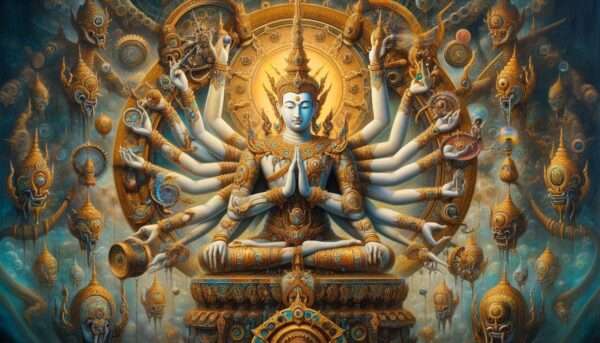
The tradition’s emphasis on forest dwelling, simplicity, and rigorous practice creates optimal conditions for this transformative insight to emerge. As such, Vipassanā Kammathāna continues to offer a profound and practical path toward authentic freedom and peace in our contemporary world.




